
Book Now
Pecos Pueblo once thrived as an important trading center for the Plains Indians and the Rio Grande Pueblo Indians. Known as Cicuye, the Pueblo was a regional superpower. In the late 1500s, Spanish conquistadores and Franciscan priests arrived to settle New Mexico. Their objective was to convert the Native people to Catholicism and to expand the Spanish Empire. To this end, they built massive Mission Churches near many Pueblos, including Pecos.
Visit Pecos and learn about the history and culture of the Native American people. Walk through the ruins of the Pueblo and appreciate the profound impact that the Spaniards had on this part of the world.
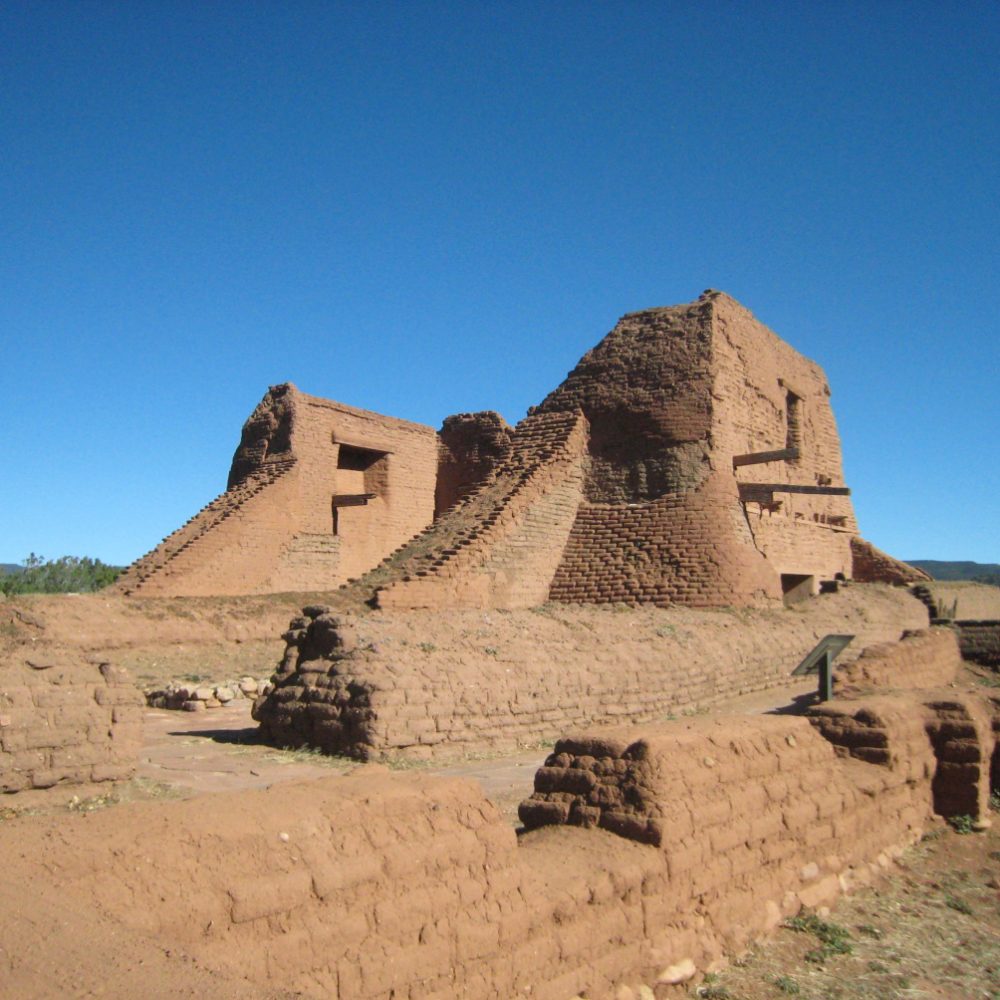
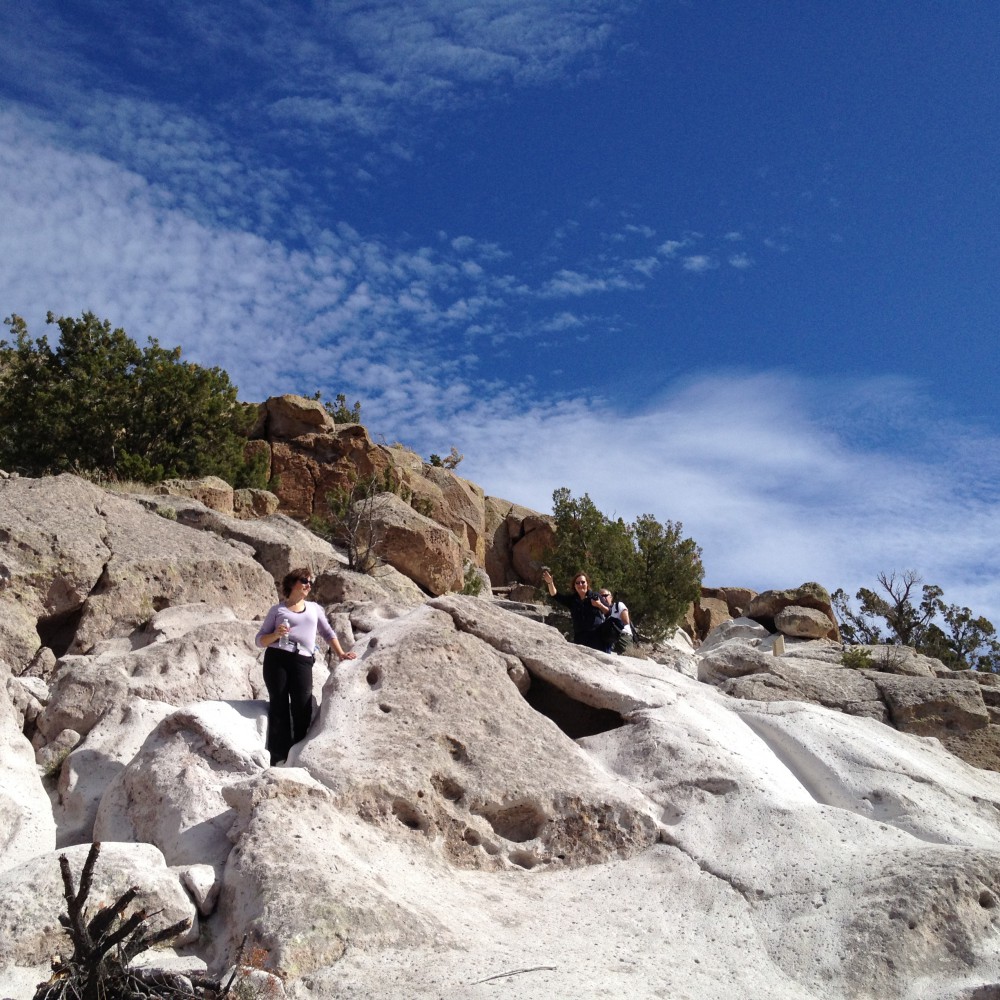
Part of Bandelier National Monument, Tsankawi is located on a mesa with amazing views of the surrounding mountains. Tsankawi has numerous cave dwellings with remarkable petroglyphs along the cliff walls. The trails here are more rugged than at the main park – you’ll walk along ancient footpaths without rail guards and concrete steps. For the adventurous hikers, there are options to explore beyond the mesa loop, off the beaten path to secluded caves and rarely seen petroglyphs.
The National Park Service will be closing the Tsankawi Trails to the public from mid-March 2023 until October 2023. We will not be able to offer tours to Tsankawi during this time.

Bandelier National Monument is home to a number of ancient Pueblo Ruins, the remains of villages that were established in the Pajarito Plateau of the Jemez Mountains from the early 1100s until the mid 1500s. Tyuonyi Pueblo, located in Frijoles Canyon, is thought to have had 400 rooms and 3 kivas. Along the cliff walls, visitors can climb into cavates, view a talus home, and ponder over what the petroglyphs may have meant to the people who once inhabited the area. Visiting Bandelier is an exhilarating adventure for adults and children.
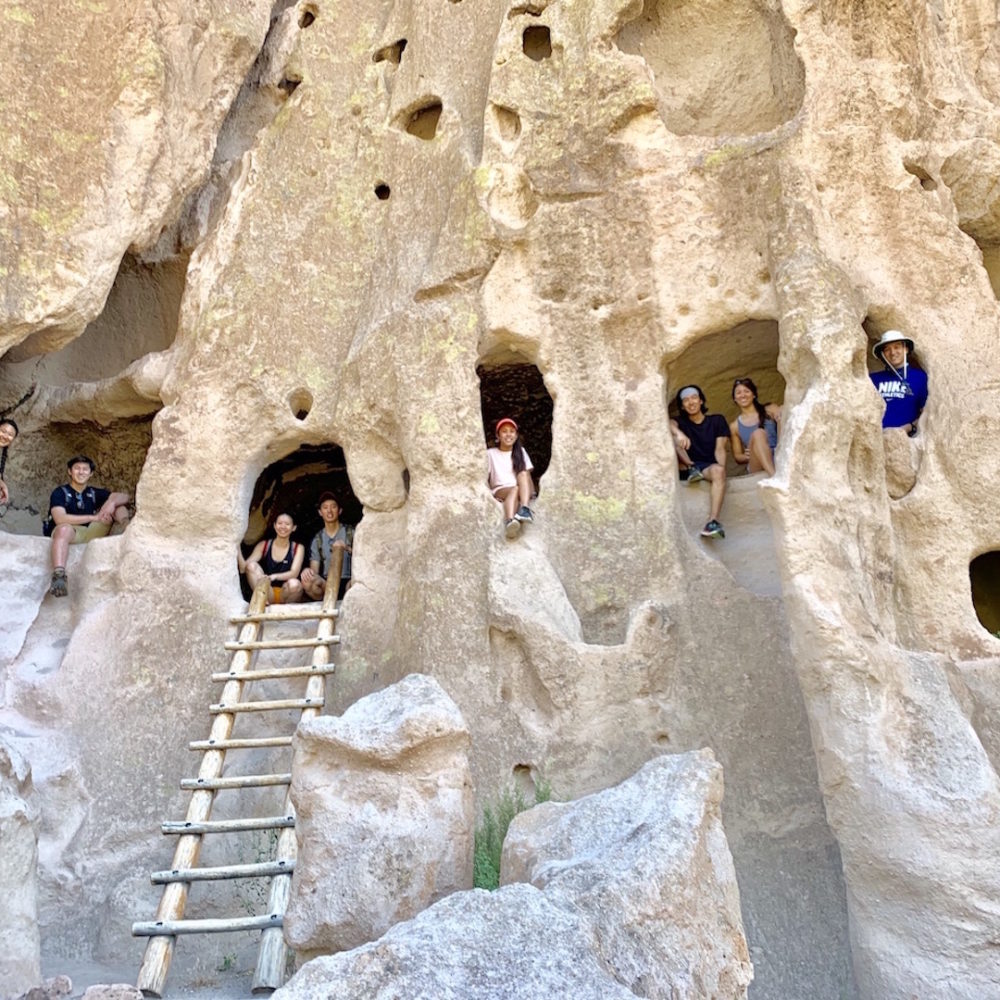
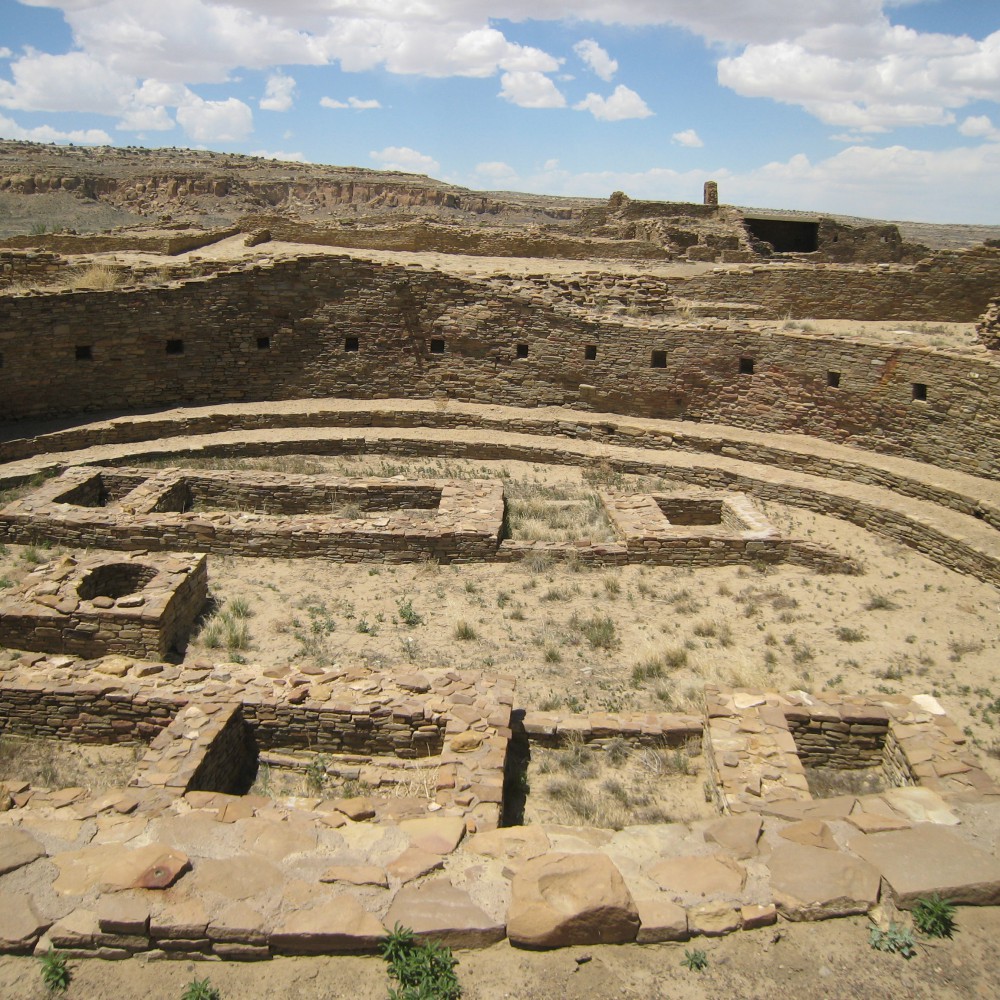
Located in northwestern New Mexico, Chaco Canyon is one of the most visually stunning archaeological sites in the Southwest. The Ancient Puebloans, known also as the Anasazi, are believed to have appeared in the Four Corners region as early as 1200 BC. In the mid 800s, the Chacoan culture experienced a phenomenal growth with the construction of several magnificent great houses including Pueblo Bonito. Sophisticated architecturally, these great houses were aligned to solar, lunar and cardinal directions. By AD 1050, Chaco was the predominant economic and cultural center of the region and remained so until about AD 1300. Scholars believe that severe drought conditions may have resulted in the depopulation and eventual abandonment of Chaco Canyon. Join us on a tour of the 6 great houses that are located along the 9-mile long Canyon Loop Drive.

Aztec Ruins National Monument, located near Chaco Canyon, was designated as a UNESCO World Heritage Site in 1987. The site’s name can be attributed to Father Francisco Velaz de Escalante who may have believed the area was inhabited by the Aztec Indians of Mexico.
The structures at Aztec Ruins National Monument were built in the early 1100s most probably to serve as “a public ceremonial, economic and political center”. Aztec was a bustling well-designed community with several great houses and kivas, along with roads.
The Ancestral Puebloans who constructed the complex at Aztec were influenced by Chaco architecture and ceremonial life but, as Chaco Canyon’s influence in the region waned, Aztec may have taken on more importance as a cultural until the late 1200s. It is conjectured that the people may have moved away because of drought, or because of social, religious or political reasons. The Ancestral Puebloans migrated south along the Rio Grande and west into Arizona, leaving behind impressive great houses and a 40-foot diameter semi-subterranean kiva that is “the oldest and largest reconstructed building of its kind”.
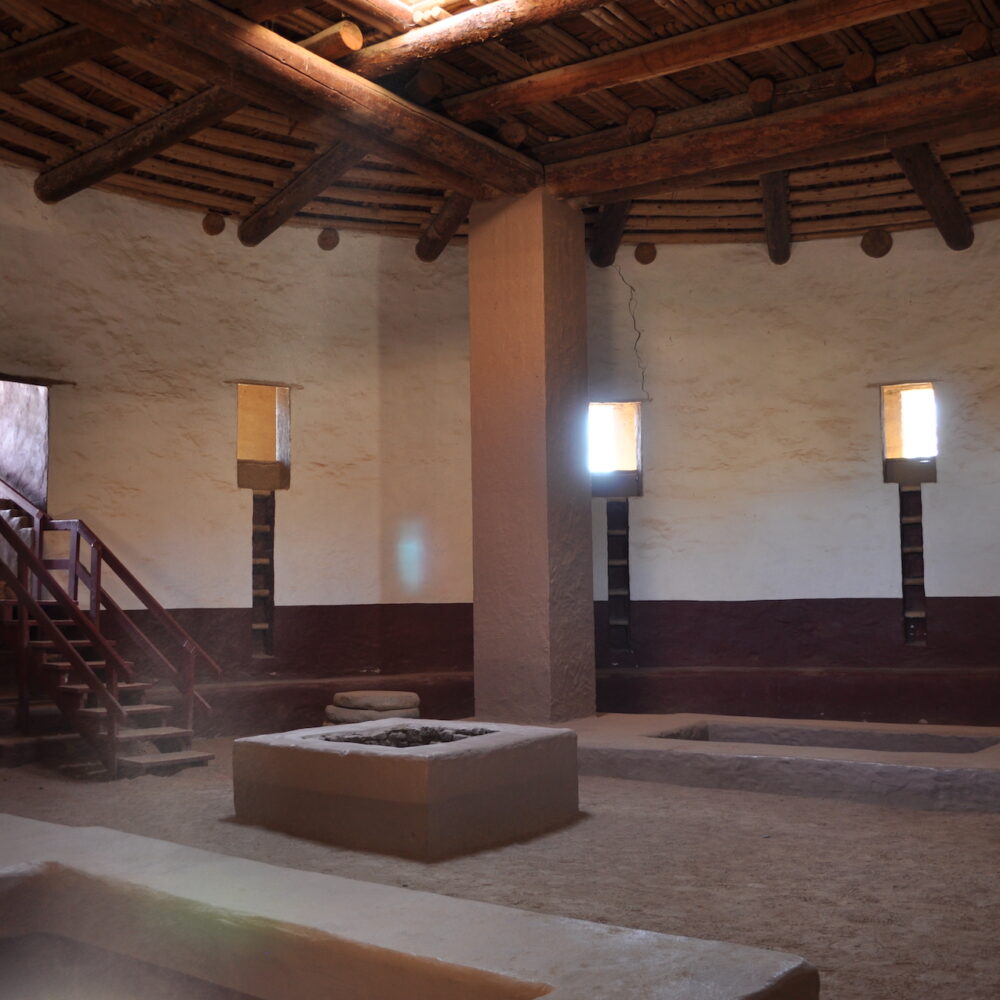

Located in southern Colorado, Mesa Verde National Park has over 4,700 archaeological sites with several notable and well-preserved cliff dwellings, pithouses and masonry towers. The Ancient Puebloans who inhabited the area from 500 A.D. to 1300 A.D. farmed the mesa tops and built elaborate stone structures.
Take a scenic drive up to the mesa tops and visit spectacular cliff dwellings that include the Spruce Tree House, the Balcony House and Square Tower House. There are ranger-led tours to several sites that must be booked in advance but simply driving the Mesa Top Loop or out to Wetherill Mesa will offer stunning vistas.

